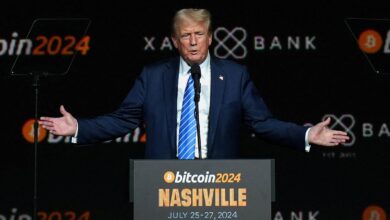
Prime Minister, Narendra Modi’s announcement withdrawing Rs 500, Rs 1,000 notes from public use post-Tuesday midnight is arguably the biggest-ever crackdown India has seen on black money hoarders and fake currency dealers.
Modi-government deserves kudos for two things here.
First, for taking a bold, unpopular step risking public backlash, which is evident from the utter chaos seen in ATMs across the country on Tuesday night and, second, for the timing and nature of the well-executed operation. Both the government and the RBI were silently preparing the ground for the final crackdown without really giving a clue to habitual offenders on what was coming.
Remember, when the government’s black money window was closed in September 2016, under which Rs 65,250 crore worth black money were declared from 64,275 declarations, Firstpost had said ( it’s time Modi-government went for the final crackdown.)
This is precisely what has happened now. Going by the government’s version, any entry in bank branches where old Rs 500, Rs 1,000 notes are to be exchanged between 10 and 30 December, will be recorded with documentary evidence, making it impossible to escape taxmen.
The source of the money needs to be shown properly, else risk getting caught with the booty.
The crackdown practically offered no time for those with the cash to think of alternative plans. Thanks to the power of social media, to use a cliché, the news spread like wildfire leaving no room for the wrongdoers to get rid of the unaccounted cash. The approaching days will be even more difficult for them. Wednesday will be a no-transaction day as banks/ATMs will remain closed. The new series of Rs 500, Rs 2,000 notes from RBI with extra security features will be released soon, making the old lot redundant.
Real estate builders most hit
Modi’s unexpected announcement would hit the real estate developers and small traders most since they typically deal in cash to avoid paying tax. Real estate is one segment in India where thousands of crores worth black money is stashed. In any part of India, certain percentage of payment for property purchases happen in cash, for which there are no records on paper.
The ratio of such transactions differ depending on the builder and the buyer. All this cash, stocked under bedroom carpets or hidden chambers will now offer not much use for the illegal holder. Traders too will take a hit in the coming days since those customers who wouldn’t typically use plastic money and engage in cash transactions may not have adequate cash in hand. But, equally worried will be political parties. In India, most political parties receive heavy donations in cash without any records. They would have spent Tuesday night wondering what to do with their hidden cash piles. Going by an analysis of Association for Democratic Reforms (ADR) and National Election Watch for 2013-14, the source of funds for most political parties remain opaque. At present, about 75 percent of the source of funds to political parties remains unknown.
The Modi government began the crackdown on black money, one of its main poll promises, when it announced a 90 days amnesty-like window for foreign black money holders charging them 60 percent tax shortly after coming to power. A total of Rs 4,147 crore of undeclared wealth was declared and the government garnered Rs 2,500 crore from the whole exercise, a paltry sum considering the kind of black money stashed abroad. This was also followed up with negotiations with other countries and tax havens to gain information on illegal cross border transactions.
Modi’s smart step is even more significant given that it has also broken the back of fake currency racket thriving in the country. Beginning Wednesday, all high value illegal currency notes won’t be worth more than the paper on which it is printed for hoarders. The sudden withdrawal of Rs 500, Rs 1,000 notes from use would mean that fake currency network will perish for now. This is an area where both UPA and NDA government struggled to act so far. There was no way to filter fake currencies from the public since those who produced such currencies kept improvising techniques to match the quality of the original currency. But, with high value currencies disappearing all of a sudden coupled with the fact that all banks are equipped with fake currency detectors, the government has, in one stroke, flushed out all fake notes from the system. Clearly, this is a master stroke by the Modi-government.
Finally, the crackdown will serve as a big boost to promote non-cash transactions in the country, an idea which has been pursued by both the government and the Reserve Bank of India (RBI) for long, but with slow progress.
The enthusiasm with which most mobile/online/PoS payment service providers reacted to Modi’s announcement on Tuesday offers adequate evidence on how critical is the announcement to move away from the use of cash. In other words, the government decision will act as a major disruption in India’s cash economy, nudging the common man to move more towards plastic money or other form of non-cash transactions.
The bottom line is this: By far, this is the biggest and boldest reform step undertaken by the Modi government to tackle black money and fake currency so far. The unexpected announcement has indeed created panic and chaos in the public resulting in long queues before ATMs minutes after the announcement. But, to trap the black money holder and fake currency dealer, this was an operation well-executed. Those who possess legitimate cash in the denominations that have been banned have no reason to worry. They can get their Rs 500, Rs 1,000 notes exchanged from their bank branches any time. Only those with illegal cash need to lose their sleep.
The short point here is this: Despite the pain for the public in the short-term, Modi’s Tuesday evening bitter pill is precisely what the doctor ordered.







